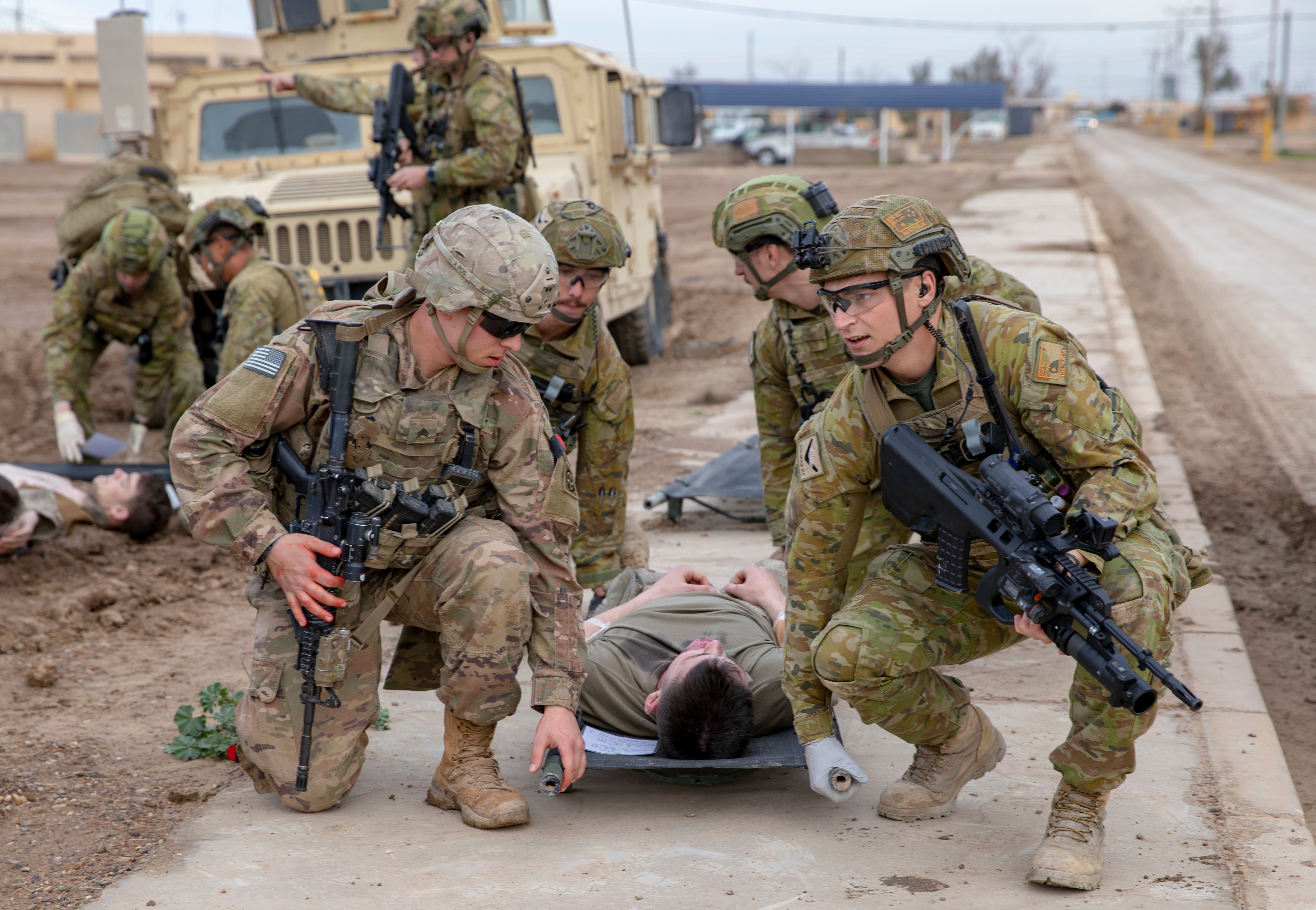The Army chief of staff said his team is “taking a hard look" at the operations tempo of the service’s air defense artillery units, which were frequently tapped this past year for deployments to the Middle East in response to a spike in tensions between the United States and Iran.
The Terminal High Altitude Area Defense and Patriot missile batteries remain among the most frequently deployed units in the service, Army senior leaders have said previously. They’ve also acknowledged a need to ease the burden on soldiers manning those systems.
“I don’t want to make promises until we can deliver,” Gen. James C. McConville told an audience Thursday at Fort Sill’s 2020 Fires Conference. “But I think the rotations right now, the ops tempo on our troops, is higher than it was even during the peak time in Afghanistan and Iraq, so we got to fix that."
Lt. Col. Curtis Kellogg, the chief’s spokesman, clarified to Army Times that McConville is concerned about the Army’s ops tempo in general. But the comments he made at the Fires Conference were specifically pointed at air defense artillery units and armored brigade combat teams.
Brig. Gen. David Stewart, the 32nd Army Air and Missile Defense Command boss, called the recent series of deployments made in response to drone and missile threats from Iran and Yemeni militias, “the 2019 air defense surge.”
RELATED

“Every Patriot unit assigned to the 32nd AAMDC was forward deployed during this period of time," Stewart said Wednesday at the conference. "More importantly, every weapon system in our arsenal, to include C-RAM, Stinger, Avenger, Sentinel Radar, Patriot, THAAD, all those were deployed forward during this time.”
McConville told Congress earlier this year that he hopes to shift some of the missile defense burden onto partners and allies.
A Patriot missile deployment in September 2019, for instance, was triggered by attacks on Saudi oil facilities. But, unfortunately, those troops weren’t close enough to defend against a Jan. 8 ballistic missile attack by Iran that struck two Iraqi bases housing U.S. troops. That sparked some to wonder whether U.S. air defense assets were spread too thin.
“What we’re looking at in some cases — when it comes to air and missile defense — is advising and assisting our partners so they use their capability to defend their bases and their critical infrastructure, and then we can use our systems to take care of our soldiers and our bases,” McConville told lawmakers in March.
But at the Fires Conference on Thursday, McConville also advised leaders to make efficient schedules at their own levels.
“I’m expecting brigade commanders, division commanders, to take a hard look at how company commanders are managing their time,” McConville said.
“Your focus, I would argue, needs to be at the lower level," he added. "Most of your time needs to be spent on training individuals in crews, squads and platoons, and maybe even companies and batteries. And quite frankly, you’ve got to figure out how to do the rest of the stuff on your time, not their time.”
McConville also said that leaders need to prioritize the work-life balance of their personnel.
That means, for instance, excusing soldiers from combat training center rotations when they have important life events coming up, like the birth of a child, he explained.
“If we show we’re willing to invest in our people, they’ll be there with us in the long term,” McConville added. “If you’re a commander and you’re just interested in the short-term — your 12 months, your 18 months — and that’s how you’re take care of your people, just making sure that you have a successful command. That’s not the way we want you doing business."
Kyle Rempfer was an editor and reporter who has covered combat operations, criminal cases, foreign military assistance and training accidents. Before entering journalism, Kyle served in U.S. Air Force Special Tactics and deployed in 2014 to Paktika Province, Afghanistan, and Baghdad, Iraq.





